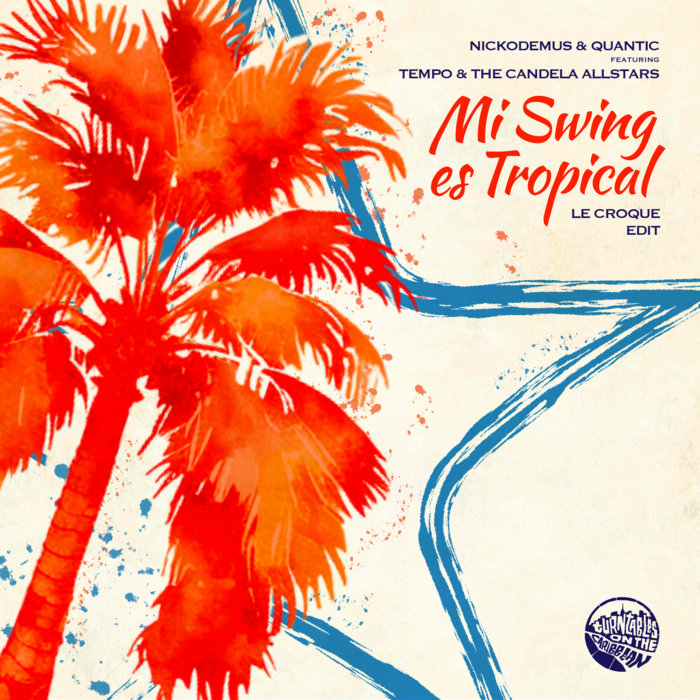
Mi Swing es Tropical (Le Croque Upswing Edit) – Quantic & Nickodemus feat Tempo & The Candela Allstars
this blog is GROOVY – check out great Soul, Funk, Jazz, Hip Hop, Bass, Breaks , Reggae, House n many more TUNES
Hey there, music lovers! 🎶 Grab your favorite pair of dancing shoes and get ready to groove, because we’re diving headfirst into the vibrant world of tempo! This heartbeat of music has been thumping away through centuries, setting the pace for everything from classical masterpieces to today’s bangers. So let’s break it down while keeping it funky fresh!
First off, what in the world is tempo? Simply put, it’s the speed at which a piece of music is played. Measured in beats per minute (BPM), tempo can range from a slow and sultry 40 BPM to an energetic 240 BPM or more! You know that feeling when you can’t help but tap your feet or sway your hips? That’s tempo working its magic on you.
Back in ancient times—think cavemen banging on rocks—humans naturally expressed rhythm with whatever tools they had. Fast forward a few thousand years and we see early civilizations like the Greeks and Romans incorporating rhythmic structures into their chants and dances.
One funny little nugget: Did you know that some ancient Greek musicians used metronomes made from wind-up mechanisms called “kithara”? Yep! They set them up during epic performances. Imagine trying to keep time while dodging sheep grazing nearby!
As we tiptoe into the Classical era (1730-1820), composers like Mozart and Beethoven started getting serious about tempo markings. They used terms like allegro (fast) or adagio (slow) to guide performers on how quickly—or not—to play their pieces.
And here’s where it gets amusing! Legend has it that Beethoven would often conduct his orchestras with such intensity that he’d lose track of his own tempo. To avoid chaos, one conductor reportedly had to stand behind him waving down a giant sign reading “SLOW DOWN!” Talk about keeping everyone on their toes!
Now let’s jump into the jazz age—where things really started swinging! In the roaring ‘20s, artists like Louis Armstrong were taking tempos up a notch with syncopated rhythms and improvisation. Suddenly, “speeding” became synonymous with “cool.” Jazz musicians were all about breaking boundaries…and occasionally breaking equipment too!
Funny fact time: There was a tale about how some jazz bands would race against each other during performances—not in competition but just for kicks! Imagine two bands going head-to-head playing faster solos until one musician loses breath mid-note…classic jazz hijinks right there!
The birth of rock ‘n’ roll shook things up even further in the 1950s with legends like Chuck Berry sending tempos skyrocketing through electrifying guitar riffs. It wasn’t unusual for songs to be clocked at over 200 BPM—perfect for those wild dance parties where everyone tried out moves named after animals…anyone remember doing “The Twist”?
Here comes another chuckle-worthy tidbit: Chuck Berry was notorious for showing up late to gigs—a true rockstar move—but once he hit that stage at full tilt? His bandmates weren’t even sure if they’d be able to keep pace until they’d see him tearing it up onstage.
Now enter glitter balls and platform shoes—the disco era took center stage during the late ’70s! With tracks by Donna Summer hitting around 130 BPM designed specifically for those electric dance floors, people were losing themselves under those flashing lights every Saturday night.
But did you hear about “Disco Demolition Night”? In Chicago’s Comiskey Park back in ‘79, fans brought disco records only to watch them go boom as part protest/part promotion—and guess what? It turned into an unexpected riot when so many people showed up eager just to dance offbeat together amidst all that chaos; sometimes tempo isn’t just musical—it becomes pure movement madness too!
Fast forward again—a new millennium arrives filled with hip-hop beats pumping along at various tempos while electronic producers play mad scientists creating soundscapes never thought possible before thanks largely due technology advancement—and boy are listeners spoiled now!
From Skrillex dropping dubstep-infused bass lines down low at half-time grooves—to Calvin Harris pushing pop tracks near max-BPM levels—you can literally find any flavor your heart desires nowadays.
Let’s share our final fun fact before wrapping this jam session—some EDM festivals have been known where DJs actually challenge each other live by switching tempos rapidly throughout sets; imagine raving out hard-style then flipping straight back into chill vibes all within minutes—it keeps everyone guessing…and body-swaying non-stop no less!!
So there ya have it friends—the history of tempo, sprinkled generously with groovy vibes throughout different eras making our music world endlessly fascinating yet ever so humorous!
Whether you’re shaking your hips or bobbing your heads against traditional beats—or simply enjoying cheeky tales surrounding famous musicians’ antics—we hope this funk-filled ride leaves you loving every beat just a little bit more than before.
Keep dancing free spirits…until next time! ✌️

Mi Swing es Tropical (Le Croque Upswing Edit) – Quantic & Nickodemus feat Tempo & The Candela Allstars